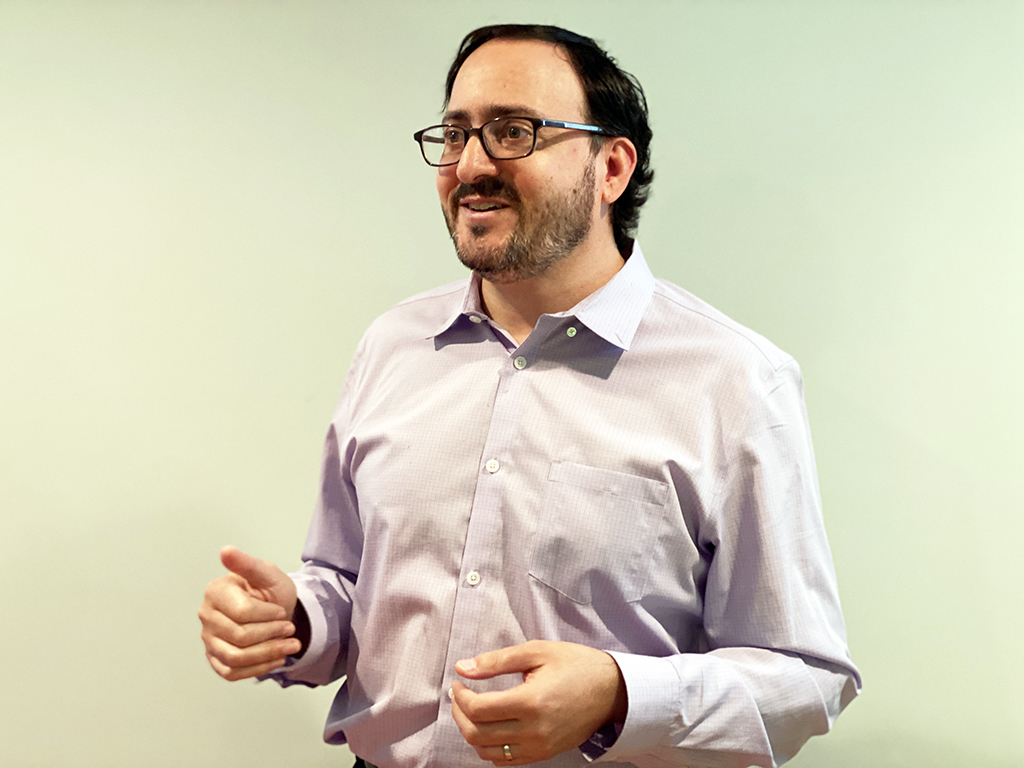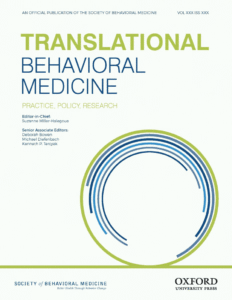Pandemic people-watching

Professor Michael Berg examines public’s COVID-19 behavior in study published in science journal
When news of the COVID-19 pandemic first swept the United States in March, many people seemed receptive to heeding warnings and following the guidance regarding how to stay safe and virus free.
However, while many countries have succeeded in reducing the spread of COVID-19, the number of new cases in the United States remains high and continues to climb. It is clear that noncompliance with preventative measures is at the heart of the spread of any infectious disease, but what leads to these behaviors?

As part of their research, the professors created a survey to examine patterns in the relationship between people’s health beliefs and behaviors at the outset of the public response in March. In part, their goal was to identify the factors that are most associated with following prevention guidelines in the hope to provide insight into which messages might be most effective in promoting compliance with behaviors that are known to reduce the chances of catching or spreading the virus.
The study they developed examined participants’ reported likelihood of engaging in eight behaviors designated by the Centers for Disease Control and Prevention as critical for the prevention of COVID-19 at the outset of the epidemic.
Already, what has been learned is being used in the classroom at Wheaton and may be of use in future efforts to control the spread of infectious disease, said Berg, co-coordinator of the college’s public health program.
“The theories that we tested are the same ones that I teach on campus,” he said. “In my ‘Health Psychology’ course next spring, this new research will present some clear examples of how some of the field’s theories can be applied to real-life situations.”
“Prevalence and Predictors of Early COVID-19 Behavioral Intentions in the United States” was published in the September issue of Translational Behavioral Medicine, a quarterly journal by the Oxford University Press covering behavioral medicine.
Berg’s co-author on the research project, Lin, is his wife. They have collaborated on public health psychology research in the past, focusing on smoking and obesity.
“Being researchers who are primarily interested in health beliefs and behaviors, we knew we had to collect some data at the beginning of the epidemic—it was just too interesting a puzzle to resist,” Berg said. “We were naturally motivated to learn more about the big predictors of why someone does or doesn’t follow those guidelines in a pandemic.”
They began by thinking about what psychological beliefs and social factors might be associated with participating in COVID-19 prevention behaviors and put together a survey.
“The beliefs we chose came right from the conceptual models we teach in our health psychology courses, and because we collected our data so early on—starting March 31—it has been interesting to see how attitudes and behaviors have shifted over time,” he said.
Self-efficacy, perceived threat and internal and external health focus of control were explored as potential predictors of those behaviors. Also, demographic and contextual factors, such as age, gender, political identity and whether or not participants were currently living under a quarantine advisory, were recorded for analysis.
The survey received responses from 354 participants from around the country and from all walks of life, reflecting a diverse range of ages and backgrounds.
“More than anything, at the beginning of this epidemic, the key factors that were associated with actively participating in the prevention behaviors were how severe people thought the illness was and how much they believed or had faith in health officials,” noted Berg. “And if you think about both of those things, we had mixed messages from the beginning of the epidemic in the United States that have evolved over time.”
Berg said that one of the biggest local events that appeared to persuade people to take the pandemic seriously was school closings. “We found that school closings seemed to have an impact and were particularly good predictors. That is, people who lived in cities and towns where schools would not be closing often did not view the epidemic as very serious and they were less likely to pursue those eight behaviors set forth by the CDC. Respondents living in communities where schools were being closed definitely saw the pandemic as being more severe and were more likely to take those precautions and follow those behaviors.”
In the weeks that followed the initial news of the pandemic’s spread, communication greatly influenced how the public behaved, according to the researchers.
Messages seeking to calm the public seemed to change both perceptions and behaviors. However, “the more political messages that emerged, such as those stating that the virus was more like the flu, that it wasn’t that serious, that it would go away, and messages basically saying that this is not a serious illness, may have led people to take fewer precautions,” Berg said.
“The other piece was the role that people viewed health officials playing in their own health,” he said. “We’ve seen a lot of messages since the beginning of the pandemic where people have either gained or lost faith in some officials and organizations like the CDC. Our research indicates that the more you believe that people play a role in your health, the more likely you are to listen to them.”
For future policymakers and health officials who want to increase prevention compliance, the biggest takeaways from the findings are: at the beginning of an pandemic like COVID-19, the severity of the health crisis has to be clearly and consistently communicated to get people to follow preventive measures. Also, the ease of following those measures needs to be stressed and the expertise of health officials must be reinforced.
“We see the published study as mainly aimed at public health officials, as it really is about message-framing at the outset of an epidemic,” Berg said. “While COVID-19 is in some ways unique and new, and it stands out as being particularly severe, we’ve actually had SARS and Ebola and other outbreaks before, and will have others in the future, after COVID-19 is gone. So, message-framing—particularly at the beginning of such an outbreak—will continue to be a very important part of public health work, and this research offers some perspective on the health beliefs that you might want to target the most if you want people to participate in effective prevention behaviors.”
—By Randell Kennedy
